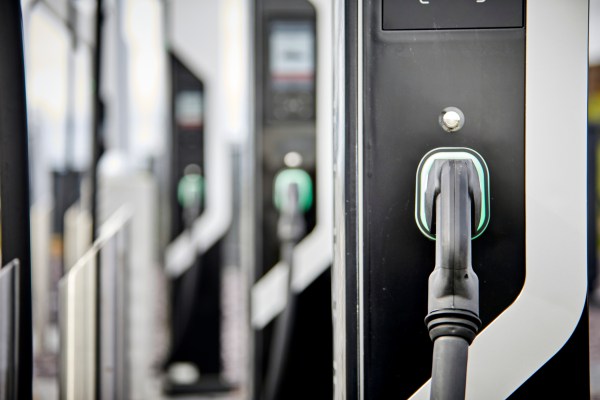Today, the electrical grid works because utilities have a time-tested playbook. They may not know exactly when you do your laundry, but they generally know washers and dryers run more in the evenings or on weekends. Air conditioners wind up when temperatures soar, and more lights click on during the dark winter months.
But in the coming years, that playbook is going to go out the window. Renewables will reshape the grid, but EVs will present the real challenge. Utilities may know how many solar panels and wind turbines are hooked up, but what about how many EVs get plugged in every night? They might have a rough estimate at best.
That’s where WeaveGrid comes in. The company’s enterprise SaaS serves as a platform integrating data from utilities, automakers, and drivers to help utilities manage the load that EVs place on the grid. This data will be increasingly important in the coming decade, when up to half of the U.S.’ 280 million vehicle fleet is predicted to become electrified.
WeaveGrid hopes not only to help utilities plan for new generating capacity, it also wants to assist in identifying where they can most effectively upgrade their distribution infrastructure, which is going to need a significant overhaul. The average age of the grid’s power transformers, for example, is 25 years.
“If 280 million vehicles all start charging around the same time at night, it’s going to create a lot of pressure on an aging infrastructure that’s really not ready to handle all of these giant batteries charging in a completely erratic manner,” said WeaveGrid CEO Apoorv Bhargava.
To help coordinate millions of vehicles charging — and to ensure they’re ready when drivers need them — WeaveGrid’s platform pulls data from utilities, automakers and even smart EV chargers to build a picture of when and where the grid will need the most power.
The company is announcing a $35 million Series B led by Salesforce Ventures, with participation from new investors Activate Capital, Emerson Collective, Collaborative Fund, and MCJ Collective. Existing investors Coatue, Breakthrough Energy Ventures, Grok Ventures, and The Westly Group also invested in the round. It’s Salesforce Ventures’ first time leading a climate tech investment.
“This is a space that we’ve been researching from our thesis-driven investment strategy for quite some time,” said Claudine Emeott, partner at Salesforce Ventures Impact Fund. “We have the pleasure of being able to hear from our customers what they’re struggling with, and knowing that WeaveGrid is the direct answer to a lot of those challenges.”
Utilities have been struggling with where and how to upgrade their distribution infrastructure. Distribution is like the last mile of the electrical grid: taking electrons from higher voltage transmission lines and feeding them to homeowners and businesses. A lot of that equipment is old, and there’s a lot of it — 5.5 million miles worth of distribution lines alone.
As a result, it’s hard to pinpoint exactly where loads may come from. For the most part, that hasn’t been a problem. Utilities can look at historical usage patterns and customer types to determine how much electricity they’ll consume and when. An office building, for example, will use more power throughout the workday. A house will use more in the evening when people come home to cook dinner or do laundry.
But EVs are threatening to upend those time-tested profiles. “If you now take a car — or 10 cars, each of which is approximately charging at the rate of two households — and now you start doing the math, very quickly that capillary network, that distribution system, starts looking incredibly vulnerable,” Bhargava said.
As part of a project with PG&E, which serves over a third of California households, WeaveGrid found 200,000 EVs that the utility “didn’t even know where they were in the territory,” Bhargava said. Identifying where those EVs are charging on the grid can help utilities pinpoint where to prioritize upgrades on the distribution network.
Smart EV chargers could also help smooth the demand curve by checking in with WeaveGrid’s servers to know which other EVs are also plugged in nearby. One might start at 11 pm, while another might start a couple hours later. “The difference between charging at 11 p.m. and charging at 12:54 a.m. could be the difference between an asset overloading, then blowing up, or not,” Bhargava said.
In addition to PG&E, WeaveGrid is also working with utilities Xcel Energy and Baltimore Gas & Electric, and is running a pilot with the U.S. government’s General Services Administration, which manages the federal vehicle fleet, among other things. The startup is also partnering with a number of automakers that allows it to “cover upwards of 80%–85% of all vehicles,” Bhargava said.
The money from the Series B will go toward continued development of the platform, new partnerships, and hiring software engineers, data scientists, business development team members, and policy experts. While Bhargava can envision a range of other applications for WeaveGrid’s technology, he said that EVs will remain the company’s “primary focus for the near and medium term.”
“We’re at 3 million EVs or plug-in vehicles in the country, and 279 million still need to be sold,” he said. “We’ve got a long way to go.”
